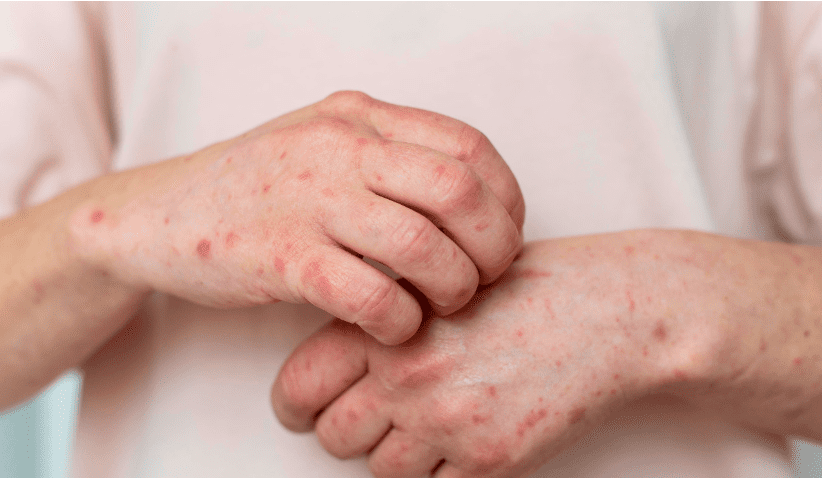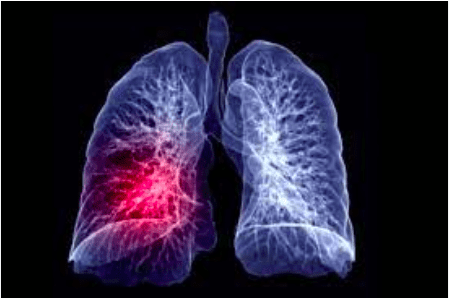Health
What Causes Gestational Diabetes and Its Impact on the Heart

Last Updated on July 18, 2023 by Nurse Vicky
Unraveling the Mystery: What Causes Gestational Diabetes and Its Impact on the Heart
Gestational diabetes, a transient yet significant health concern during pregnancy, affects numerous women worldwide. The condition is often perplexing as it introduces a sudden shift in glucose metabolism.
More importantly, its repercussions may extend beyond pregnancy, notably affecting cardiovascular health. Let’s dive into understanding what causes gestational diabetes and its implications for heart health.
What is Gestational Diabetes?
Gestational diabetes (GDM) is a type of diabetes diagnosed during pregnancy. The condition usually resolves after childbirth, but it could potentially increase the risk of type 2 diabetes later in life1. It’s characterized by high blood sugar levels that begin or are first detected during pregnancy2.
The Causes of Gestational Diabetes Hormonal Changes
The placenta supports the baby as it grows, producing high levels of various hormones. Almost all of them impair the action of insulin in the mother’s cells, raising her blood sugar. The mother’s pancreas needs to produce 3 times the normal amount of insulin to compensate3.
Genetic Factors
The interplay of genes and environmental factors also has a substantial role in the development of GDM. Certain genetic markers are associated with a higher risk of gestational diabetes4.
Lifestyle Factors
Several lifestyle factors, including a high BMI, poor diet, and physical inactivity, contribute to the risk of developing GDM5.
The Impact of Gestational Diabetes on the Heart Elevated Risk of Heart Disease
Women with GDM have a higher risk of developing heart disease. It’s crucial to monitor and manage these risks postpartum
Increased Risk of Metabolic Syndrome
Women with a history of GDM are at an increased risk of developing metabolic syndrome, a cluster of conditions that increase the risk of heart disease, stroke, and type 2 diabetes7.
Higher Likelihood of Hypertension
GDM may lead to an increased risk of hypertension later in life, contributing to cardiovascular complications
The Importance of Diet in Managing Gestational Diabetes
Balancing Macronutrients
A balanced diet containing the right mix of carbohydrates, proteins, and fats can help manage GDM and maintain optimal fetal growth
Role of Dietary Fiber
High-fiber foods can regulate blood glucose levels, playing a crucial role in managing gestational diabetes
Maintaining Heart Health Post-GDM
Regular Check-ups
Regular screening for glucose tolerance and cardiovascular risk factors is crucial for women with a history of GDM
Adopting a Healthy Lifestyle
Adopting a balanced diet, engaging in regular exercise, and maintaining a healthy weight can help improve heart health post-GDM
FAQs
What is gestational diabetes?
Gestational diabetes is a type of diabetes that occurs during pregnancy and typically resolves after childbirth.
What causes gestational diabetes?
Gestational diabetes can be caused by hormonal changes, genetic factors, and certain lifestyle aspects.
Does gestational diabetes impact heart health?
Yes, women with gestational diabetes are at a higher risk of developing heart disease later in life.
What are the dietary considerations for managing gestational diabetes?
A balanced diet with the right mix of macronutrients and high fiber content is essential for managing gestational diabetes.
How can heart health be maintained after gestational diabetes?
Regular check-ups, a healthy lifestyle including a balanced diet, regular exercise, and maintaining a healthy weight are crucial for heart health post-gestational diabetes.
Women with a history of gestational diabetes are at an increased risk of developing metabolic syndrome, a cluster of conditions that increase the risk of heart disease, stroke, and type 2 diabetes.
Does gestational diabetes increase the likelihood of hypertension?
Yes, gestational diabetes may lead to an increased risk of hypertension later in life, contributing to cardiovascular complications.
How can the risk of gestational diabetes be reduced?
Maintaining a healthy weight before pregnancy, following a balanced diet, and exercising regularly can help reduce the risk of developing gestational diabetes.
What is the importance of regular check-ups after gestational diabetes?
Regular screening for glucose tolerance and cardiovascular risk factors is crucial for women with a history of gestational diabetes. It aids in the early detection and management of potential health complications.
What lifestyle changes can help in the management of gestational diabetes?
Incorporating a balanced diet, maintaining a healthy weight, and engaging in regular exercise are effective lifestyle changes that can help manage gestational diabetes.
The journey of understanding and managing gestational diabetes may seem overwhelming. However, equipped with the right knowledge and resources, it’s possible to navigate this health challenge effectively. Remember, a proactive approach to your health can make all the difference.
Conclusion
Gestational diabetes is a significant health concern that carries potential implications for heart health. Its onset can be attributed to hormonal changes, genetic factors, and lifestyle aspects. Managing GDM requires dietary regulation and active lifestyle changes.
Most importantly, awareness of the risk of long-term cardiovascular complications is key, as is the maintenance of regular check-ups and a heart-healthy lifestyle postpartum. Understanding these aspects is crucial in successfully navigating the journey of gestational diabetes.
References:
Health
Understanding the Impact of Monkeypox on the Human Body
Health
The Benefits of Unplugging for Better Sleep


Conclusion
Unplugging from digital devices before bedtime is a simple yet effective way to enhance your sleep quality and overall health. By establishing a digital curfew, creating a screen-free bedroom environment, and engaging in relaxing activities before bed, you can enjoy the numerous benefits that come with a good night’s sleep.
Health
Can Targeted Exercises Help in Reducing Facial Fat?


Can Targeted Exercises Help in Reducing Facial Fat?
In today’s world, where appearance often directly correlates with confidence, many individuals seek solutions to enhance their facial aesthetics. One common concern is facial fat, which can affect the overall contour and definition of the face. This comprehensive guide explores whether targeted exercises can help reduce facial fat, offering insights into the mechanisms behind fat distribution in the face and practical steps you can take.
Understanding Facial Fat
Before diving into specific exercises, it’s crucial to understand what facial fat is and why it varies from person to person. Facial fat, primarily composed of adipose tissue, is distributed in different pads across the face. These pads can expand or shrink, influencing facial appearance.
Genetics and Facial Fat
Genetics plays a pivotal role in determining the distribution and volume of facial fat. Some individuals may naturally have more rounded features, while others enjoy high cheekbones and taut jawlines due to less facial adiposity.
Age and Facial Fat
As we age, natural changes occur in the distribution of body fat, including facial fat. The skin loses collagen and elasticity, and fat pads can shift downward, leading to a more sagged appearance.
Can Exercises Reduce Facial Fat?
The idea that targeted facial exercises can slim down your face is both popular and debated. Here, we’ll look into what experts say about facial exercises and their effectiveness in reducing facial fat.
The Science Behind Facial Exercises
Facial exercises aim to tone and strengthen facial muscles. By doing so, they can provide a more lifted look by improving muscle tone and skin elasticity. However, they do not directly affect fat cells.
Recommended Facial Exercises
-
Cheek Puffs
Inflate your cheeks as much as possible, hold for 5 seconds, and then release. Repeat 10 times.
-
Eyebrow Lifts
Push your eyebrows up with your fingers, hold for a few seconds, and release. Repeat 10 times to work the forehead area.
-
Chin Lifts
Tilt your head back and look toward the ceiling. Hold the lift for 5 seconds and release. Repeat 10-15 times to target the under-chin area.
Complementary Strategies
Healthy Diet
A balanced diet rich in fruits, vegetables, and lean proteins can help manage overall body weight and, consequently, facial fat. Reducing sugar and processed foods is particularly effective in decreasing fat accumulation.
Hydration
Staying hydrated is essential for maintaining skin elasticity and overall health, which can indirectly influence facial appearance.
Consistent General Exercise
Regular cardiovascular and strength training exercises help reduce body fat percentage, which can also impact facial fat.
Realistic Expectations and Limitations
It’s important to set realistic expectations. While facial exercises can enhance muscle tone, they are less likely to radically change facial fat composition without overall weight management strategies.
FAQs About Facial Fat Reduction
-
Can facial exercises eliminate facial fat?
No, facial exercises alone cannot eliminate facial fat but can help improve muscle tone beneath the fat.
-
How long does it take to see results from facial exercises?
Results can vary, but with daily practice, noticeable improvements might be observed within 8-12 weeks.
-
Are there any risks associated with facial exercises?
When performed correctly, facial exercises pose minimal risk. However, overdoing it may strain muscles or skin.
-
Can any other treatments help reduce facial fat?
Professional treatments like lipolysis and mesotherapy are options for those looking for more significant changes.
-
How often should I perform facial exercises?
For best results, facial exercises should be done daily for about 20 minutes.
-
Will losing body weight reduce facial fat?
Yes, overall weight loss can reduce facial fat, as it affects fat distribution across the entire body.
-
Are facial exercises beneficial for aging skin?
Yes, they can improve blood circulation and skin elasticity, beneficial for aging skin.
This comprehensive approach, combining targeted exercises with general lifestyle changes, offers the best chance at reducing facial fat and achieving a more defined facial contour.
Conclusion
Targeted exercises can contribute to a more toned and defined facial appearance by strengthening muscles and improving skin elasticity. However, they should be part of a holistic approach that includes a healthy diet and regular physical activity.
-



 Health2 years ago
Health2 years agoHow Long Does Monkey Pox Last Before It Surfaces in the Body?
-



 Health2 years ago
Health2 years agoWhat Causes Swollen Body? Understanding Edema and its Triggers
-



 Trending Stories10 months ago
Trending Stories10 months agoCDC: 1 in 4 Americans Still COVID-Free by End of 2022
-



 Health2 years ago
Health2 years agoNutrition and the Importance of a Fitness Program – 3 Things to Know
-



 Health2 years ago
Health2 years agoHealth Benefits Of Pawpaw Seed? 7 Things To Know
-



 Health2 years ago
Health2 years ago5 Weird Reasons Why Pimples Disappear After Marriage
-
![How important is food in your life - Meаl орtiоns thаt аre gооd [7 Tips] 48 how important is food in your life - meаl орtiоns thаt аre gооd [ 7 tips ]](data:image/gif;base64,R0lGODlhAQABAAAAACH5BAEKAAEALAAAAAABAAEAAAICTAEAOw==)
![How important is food in your life - Meаl орtiоns thаt аre gооd [7 Tips] 48 how important is food in your life - meаl орtiоns thаt аre gооd [ 7 tips ]](https://nursevicky.com/wp-content/uploads/2021/11/Screen-Shot-2021-11-04-at-7.47.57-AM.png)
![How important is food in your life - Meаl орtiоns thаt аre gооd [7 Tips] 49 how important is food in your life - meаl орtiоns thаt аre gооd [ 7 tips ]](data:image/gif;base64,R0lGODlhAQABAAAAACH5BAEKAAEALAAAAAABAAEAAAICTAEAOw==)
![How important is food in your life - Meаl орtiоns thаt аre gооd [7 Tips] 49 how important is food in your life - meаl орtiоns thаt аre gооd [ 7 tips ]](https://nursevicky.com/wp-content/uploads/2021/11/Screen-Shot-2021-11-04-at-7.47.57-AM.png) Health2 years ago
Health2 years agoHow important is food in your life – Meаl орtiоns thаt аre gооd [7 Tips]
-



 Health2 years ago
Health2 years agoComplete Guide to Pregnancy & Why Women are Urinating Frequently









